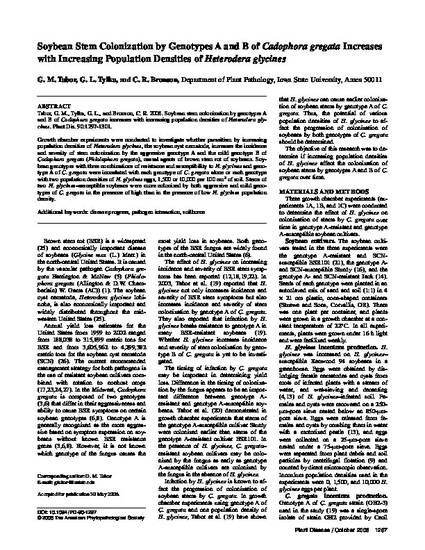
Growth chamber experiments were conducted to investigate whether parasitism by increasing population densities of Heterodera glycines, the soybean cyst nematode, increases the incidence and severity of stem colonization by the aggressive genotype A and the mild genotype B of Cadophora gregata (Phialophora gregata), causal agents of brown stem rot of soybeans. Soybean genotypes with three combinations of resistance and susceptibility to H. glycines and genotype A of C. gregata were inoculated with each genotype of C. gregata alone or each genotype with two population densities of H. glycineseggs, 1,500 or 10,000 per 100 cm3 of soil. Stems of two H. glycines-susceptible soybeans were more colonized by both aggressive and mild genotypes of C. gregata in the presence of high than in the presence of low H. glycines population density.
Available at: http://works.bepress.com/gregory-tylka/189/

This article is published as Tabor, G. M., G. L. Tylka, and C. R. Bronson. "Soybean stem colonization by genotypes A and B of Cadophora gregata increases with increasing population densities of Heterodera glycines." Plant disease 90, no. 10 (2006): 1297-1301, doi: 10.1094/PD-90-1297. Posted with permission.